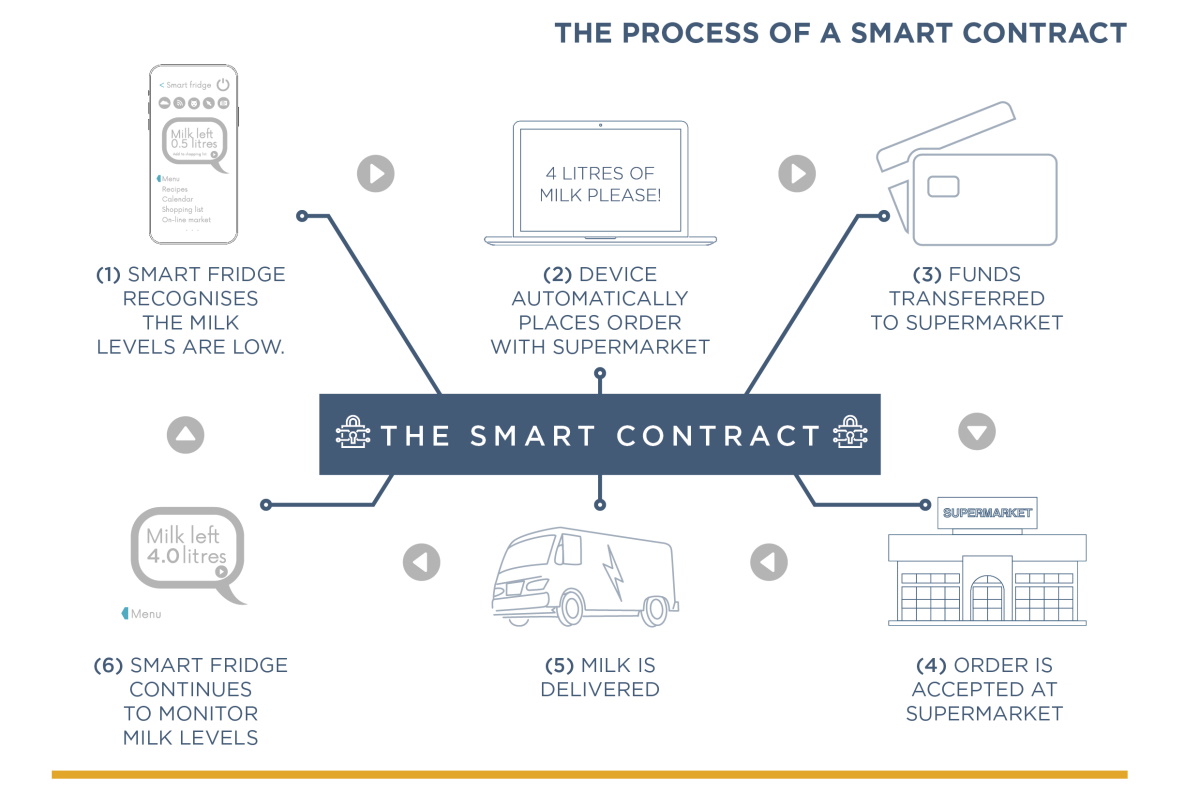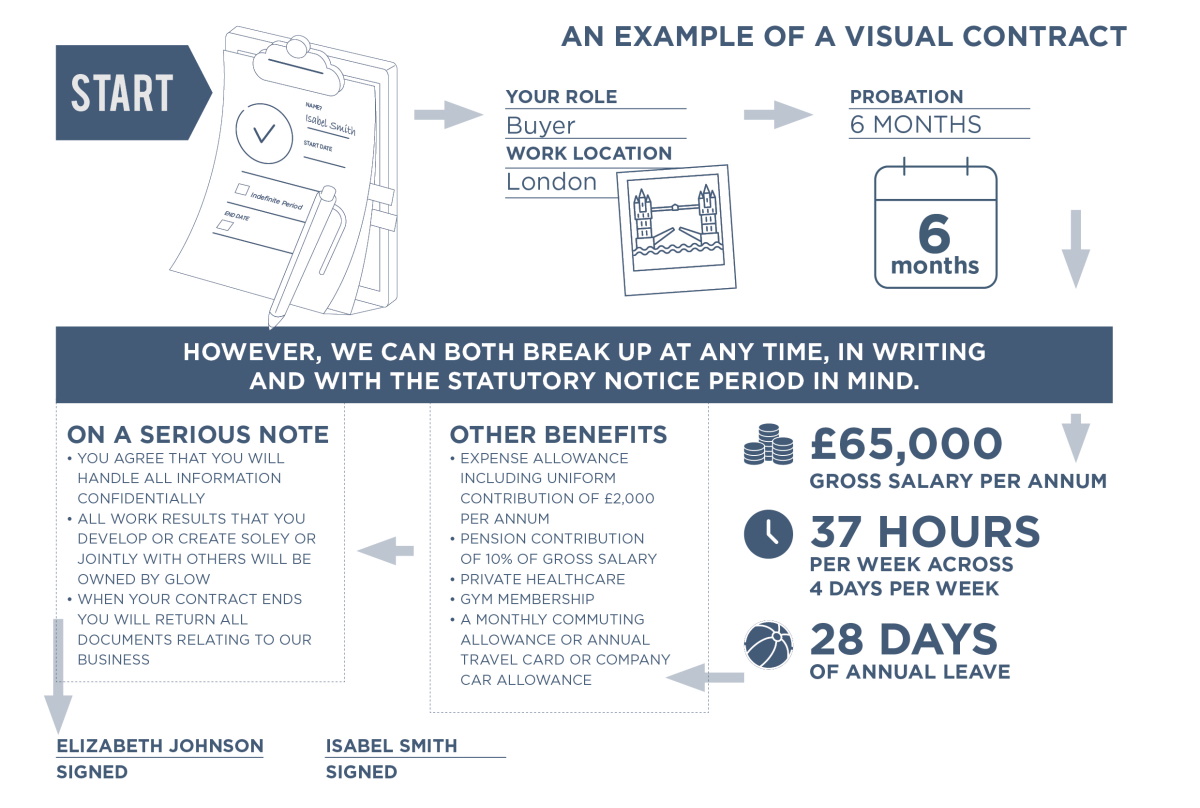Changing technology and consumer expectations mean that, in retail, contracts need to evolve and become simpler – smart contracts and visual contracts are two new contract forms that are designed to be understandable and efficient.
In the context of retail, the opportunity to convert a browser to a repeat customer can often be over in a matter of seconds and the more frictionless the journey, the more likely the customer is to purchase.
Smart contracts
“Smart Contracts” are created by computer code, which self-execute without human intervention; they have been governing certain crypto currency transactions for some time.
Formulated by a series of coded instructions, ‘smart’ contracts are produced automatically when certain variables are satisfied. As smart devices increasingly start making decisions for us, contracts will increasingly be formed by algorithms without active human participation and will purchase goods and services because the customer needs them rather than relying on the customer to purchase them.
Take the example of a smart fridge. It regularly scans its contents, examining what’s running out and reordering goods automatically without any action by the consumer. There is a set of computer codes that instruct to order the missing products from the supermarket delrhiivery website that you are linked to and instruct payment pay from your bank account.
Traditional contracts are increasingly being seen as inefficient, requiring too much time and involving too many stakeholders. A smart contract can be executed, with funds securely settled in minutes rather than days.
The attractions are obvious. A smart contract can buy something at exactly the right time or at precisely the point at which you need it – no waste; no waiting and no intermediary. For consumers this could mean getting goods as soon as they are in season, or in stock in their size.
However, when computer code goes wrong the downsides can be serious. When smart contracts do go wrong – and a few have – it’s because the contract operates in unforeseen ways as the code has too many variables and so too many permutations. At one level, forgetting to put the milk in the right slot in the fridge might mean having too much milk being delivered; finding out that your business has mistakenly forward purchased enough electricity to power London for a decade could be costly.
Smart contracts and the law around them is developing. Nevertheless, the courts now accept that a contract can be formed without interaction from individuals and on the basis of terms that only come into being when the computer code activates.
Visual contracts
It is said that “a picture paints a thousand words” so given that the retail industry is driving to shorten its contracts and improve understanding/compliance we expect to see greater use of pictures in contracts with consumers, suppliers, and even employees.
In many ways the use of diagrams is not new, process charts such as personal data flows or change control mechanisms are increasingly incorporated as diagrams in place of or alongside text. In supply chain contracts, incoterms can be pictorially represented to show where title and risk to goods pass, where it is not as widely understood by an acronym. Visual cartoon-strip employment contracts are also becoming popular, as they are seen to be more engaging and “on brand” for a retail business which is keen to attract the best creative and innovative talent.
Pictures are not just for marketing however – data shows there may be clear business and financial benefits to putting pictures in contracts:
While it is true that using pictures carries some uncertainty (especially as there is no dictionary which provides an objective interpretation or definition), if used thoughtfully and appropriately, there should be no greater risk in using diagrams than words in contracts. It will still come down to issues of certainty and consistency and if there is any inconsistency, ordinary rules of contract interpretation should still apply. In fact, if the pictures can be shown to be something that contracting parties particularly focussed on in negotiations, it would be reasonable for a court to find that the pictures (and not the words) reflect the true expression of the parties’ intent.
Discover over 35 legal and regulatory changes that may impact your business throughout 2021 and beyond. Addleshaw Goddard’s Horizon Scanner has gone digital, Access it here.
To find out more about Addleshaw Goddard and the services they provide to the retail industry, click here.
This article was also published in The Retailer, our quarterly online magazine providing thought-leading insights from BRC experts and Associate Members.



